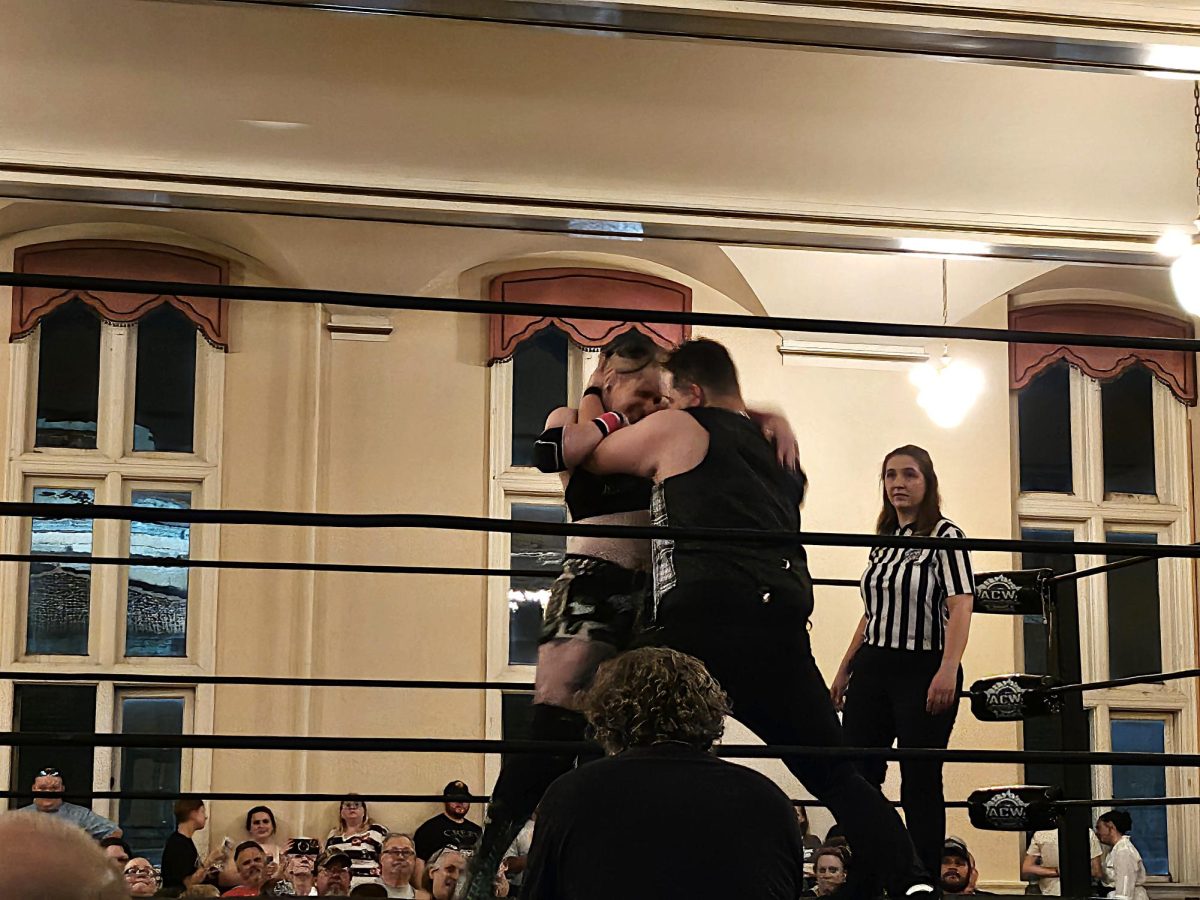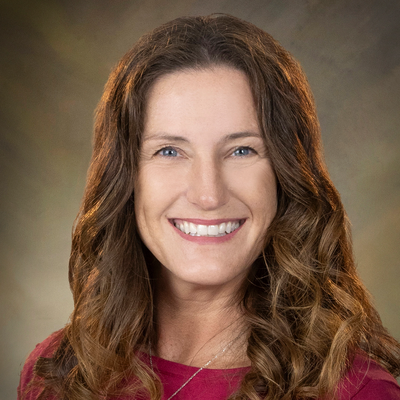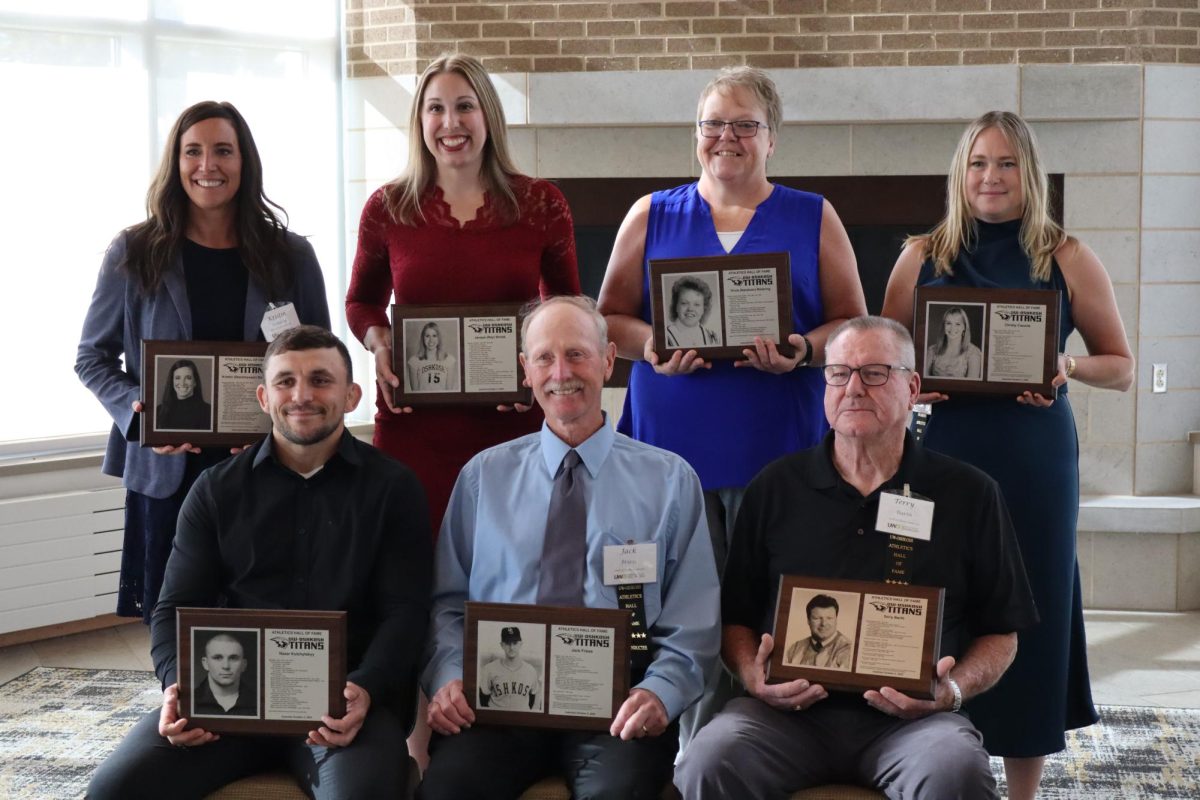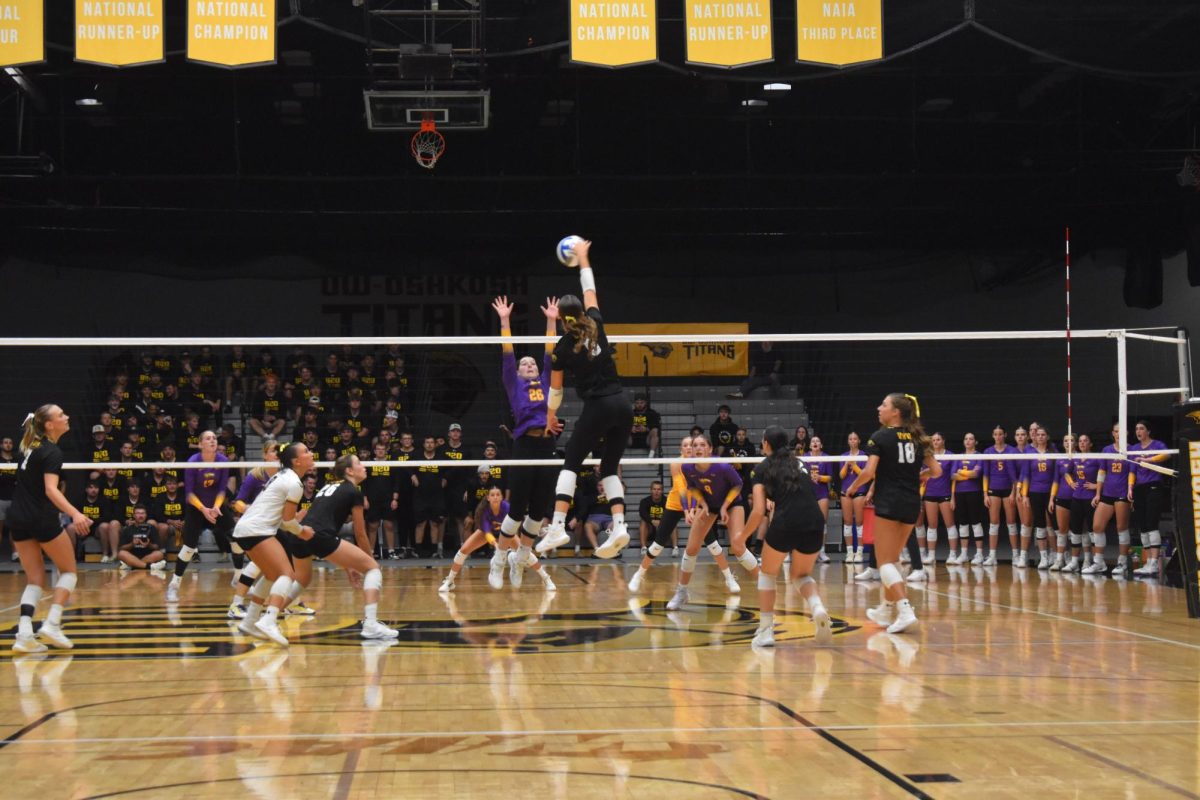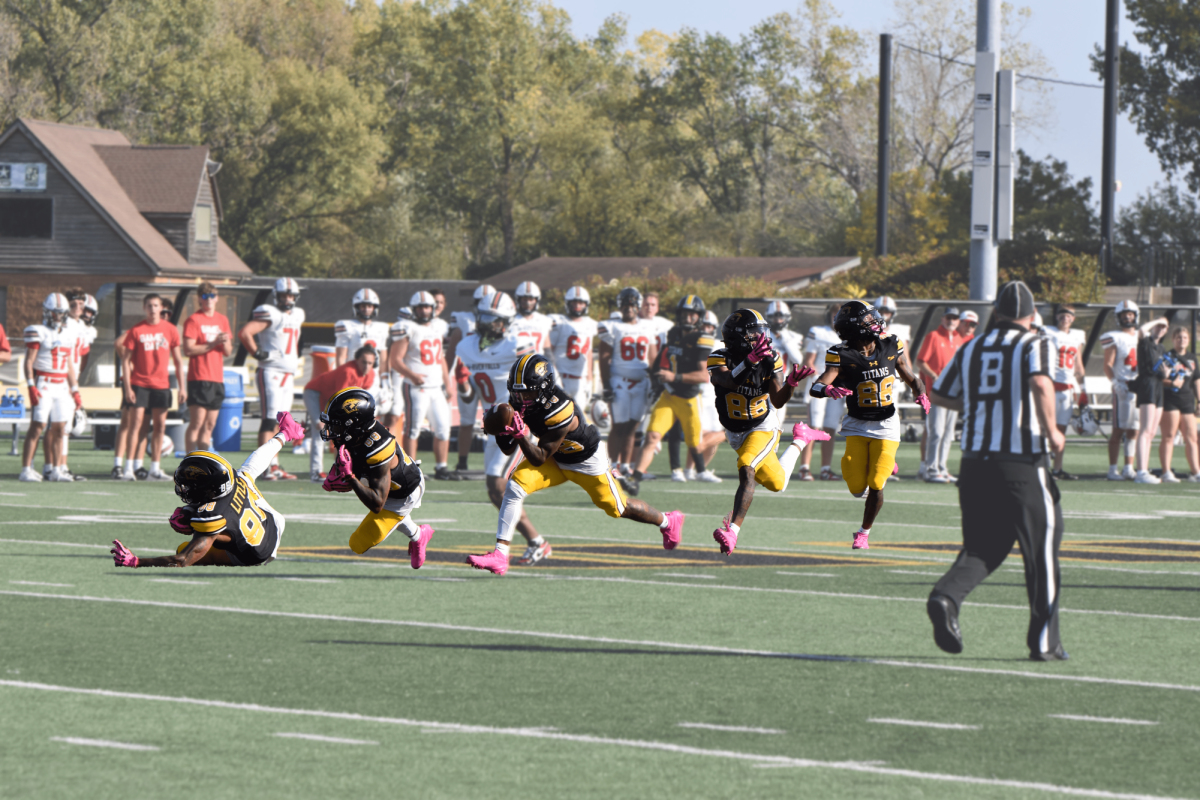Every Friday at 6 a.m. in the winter and spring, UW Oshkosh senior Felicia Retrum arrives at the UWO Student Recreation and Wellness Center to lift weights and condition her body for the upcoming fall season.
Retrum is a forward for UWO women’s soccer, an NCAA Division III team.
60 miles north of Oshkosh, junior goalkeeper Kelly Kent can be found doing the exact same thing as Retrum. However, Kent is a member of the UW-Green Bay women’s soccer team, a D-I program.
Although the two athletes compete at different levels, there is one thing they both have in common: a passion for the game.
Retrum said she chose to go out for soccer in college because she wasn’t ready to be done playing.
“I have never known anything other than playing sports and I didn’t want to give up the sport I loved,” Retrum said.
Kent’s reason for competing is no different than Retrum’s.
“I decided to play soccer in college because I love the sport,” Kent said. “I originally was not planning to play in college, but when I received a D-I offer, I decided that I would at least try to play because I didn’t want to have any regrets in the future.”
The passion for the sport exists on both levels. There is a plethora of other things that make them both different, and similar, as well.
Scholarships and
Endowments
A big divergence between the two is that D-I athletes often receive scholarships to cover tuition, while D-III athletes do not.
Junior Kennedy Bilse, midfielder for the Green Bay Phoenix, said getting assistance for school tuition was another reason she went D-I.
“I get four years of full tuition, plus an opportunity to add books and/or housing if grades are good,” Bilse said.
Scholarships are not the only perks for D-I soccer players. These athletes also receive a myriad of endowments for competing in a sport.
“We get a lot of new gear each year: practice clothes, warm ups, sweatshirts, sweatpants, random clothes to wear around, tennis shoes, cleats, goalie gloves and bags,” Kent said. “We also get all our meals paid for during preseason in August, pregame meals and whenever we are on a trip.”
Titans junior forward Alek Kleis said many people do not realize how expensive being a D-III athlete can be. Compared to higher division athletes, D-III players often have very few things paid for.
“The only perks we get are free meals when we travel and we usually raise the money so we can eat more meals on away trips,” Kleis said. “We also get one pair of socks for each jersey color our freshman year, otherwise we have to pay for new ones every year. My least favorite thing would be having to pay for a lot of your own things, like our practice tees.”
In-Season Daily Life
Both D-I and D-III women’s soccer teams compete during the fall, and their in-season routines are quite similar when it comes to what the players’ daily lives are like.
Athletes from both levels move back to school during early to mid August to practice before games start in the beginning of September.
UWO sophomore midfielder Maddie Morris said she learned how to create a routine during her first year at college that she follows every day during the season.
“My typical day will start at 8 a.m. for my morning classes and I will usually have back to back classes until two, which gives me enough time to get some food before our practice [which starts at 3:30 p.m.],” Morris said. “After our practice, which is usually done around six, I will start doing homework or studying.”
However, when it comes to traveling for games during the regular season, there is a big difference between D-I and D-III.
UWGB is a member of the Horizon League, which includes UW-Milwaukee, Detroit Mercy, Northern Kentucky, Valparaiso (Indiana), Wright State (Ohio) and others. Because they have opponents from such far distances, most games are played on weekends, Kent said.
“We have games on Friday and Sundays for non-conference and usually Saturdays in-conference,” Kent said. “Every year we travel to at least one of the farthest teams in conference. For example Youngstown State [Ohio] is approximately a 10-hour drive.”
Bilse said the Phoenix will sometimes play opponents who are closer to Green Bay, like UW-Milwaukee and the University of Illinois-Chicago, during week nights.
“Randomly, there is a game or two on a Tuesday or Thursday that you might have to miss class for,” Bilse said.
UWO is in the WIAC, which consists of schools only from Wisconsin. The farthest in-conference opponent is River Falls, which is about a four-hour drive from Oshkosh.
“For our travel during the season, it is not too bad,” Morris said. “We usually travel shorter distances during the weeknights and a bit farther on the weekends. On our midweek games, we very rarely miss school due to having later games.”
What both groups of athletes can agree on is how organized and focused they have to be during the season to stay on top of homework. This means less time with friends and doing less at night on the weekends to make up for lost study time, Retrum said.
“If we have a weekday game I will make sure that I communicate with my professors and get my work done early so I don’t fall behind in my classes,” Retrum said. “Whenever we have a weekend game, I will stay in during the the two nights before to get my homework done so I don’t have to worry about it while on the road or on game day. I have never felt behind in any of my classes, just sometimes rushed to get things done on time.”
Kleis said she has found ways to squeeze in homework through study tables and being diligent with her time while traveling on the bus to and from games.
“As a freshman, I struggled with managing my time because college life is a lot more of a commitment, but you get used to finding the times when you can really sit down and do your homework,” Kleis said. “We also are provided study tables so people can come and have a set time to do homework and get help from fellow teammates. We also have quiet time on the bus rides so people have a quiet place to focus and do their homework.”
Off-Season Daily Life
UWO’s women’s soccer team and UW-Green Bay’s team both focus on staying in-shape during the off-season.
For UWO, athletes have group weight lifting three days per week. Players are encouraged to work out on their own, join a YMCA indoor league in the winter and play pickup ball at the Student Recreation and Wellness Center at least once a week, Retrum said.
The team also participates in a spring season.
“When spring season starts, we practice three days a week and lift two times a week,” Kleis said. “We have one day in late April or early May when we have a spring game day and we play three schools which are usually Marion, Milwaukee School of Engineering and Concordia University. We have a lot more time for homework and a social life, but soccer is still a big part of it.”
According to Bilse, the Phoenix have a 90-minute practice two to five days per week and lift weights three times per week during the off-season. Kent added UWGB played in a seven versus seven tournament this spring and competed in three full-field games as well.
“We still travel during spring season, but we aren’t allowed to miss class so most people try and take their hardest classes in spring,” Kent said. “It seems like we have more time to do homework in spring because we have practice early in the morning, so once we’re done, you’re free for the day.”
A Love for the Sport and Teammates
From game-winning goals to silly moments off the field, both D-I and D-III soccer players agree that their favorite part of being on a collegiate soccer team is the times they get to spend with their fellow teammates.
“Honestly I can’t choose a single memory,” Kent said. “I’ve made so many unforgettable memories with my teammates, especially off the field.”



